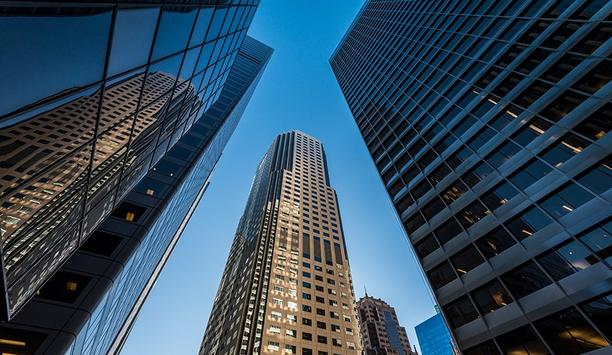In the digital age, speed has never been more critical. Customers expect an instant response to a query. Executives expect sales data on their tablets in front of them in real-time. A site manager at an oil refinery needs an instant alert about a defective valve. An IT manager expects to know about a phishing email before it hits his employees’ inboxes.
The 'need for speed' is impacting the physical security sector too. Customers increasingly expect their security systems to identify and act upon threats before they turn into real incidents. They expect to know right now if the fire or intruder alarm is false, and to take corrective action swiftly.
Driven by this heightened customer demand for quicker information to make better decisions faster, innovation in video surveillance technology has accelerated in recent years.
Video analytics for fast threat detection
Video analytics enables site managers and security teams to swiftly address threats in any building or around a perimeter, often before they take place. For example, Honeywell’s Xtralis LoiterTrace is a technology that can identify an individual hovering suspiciously in an area, alert the security team or central monitoring station (CMS) and is even capable of delivering a pre-emptive voice warning to the potential criminal.
So sophisticated are the latest technologies available on the market that, when correctly installed, they are capable of differentiating between a sheep grazing near an airport fence and a would-be intruder crawling on their hands and knees. They are also designed to withstand outside forces that negatively impact system performance such as adverse weather conditions or animal interference.
Some developments from Honeywell also enable geo-fencing of specific sections of a video frame so the system can be set up so that an alarm is only triggered if a specific section of the picture is occupied by an individual. In busy areas such as a parking garage or a shopping centre, these innovations help to target specific areas that require surveillance and minimise false alarms.
 |
| Technology can identify an individual hovering suspiciously and alert the security team or central monitoring station |
Video verification technology reduces false alarms
False alarms cost organisations money, and cause hassle and reputational damage if they are not quickly and decisively addressed by a business. For that reason, the integration of video verification technology that can visually confirm the presence of a threat, is one of the most exciting developments in the physical security sector today.
Let's imagine that a CMS supporting a major industrial site detects an alarm going off in one of the maintenance buildings. The default decision today is often a call to the site manager followed by an inconvenient, time-consuming site visit or a call to the local police force with a request to investigate (which may be ignored). Video verification enables the existence and nature of an intrusion to be immediately detected and addressed.
Using Honeywell’s Videofied, a visual verification technology, an Arizona-based security contractor Eyesite Security recently apprehended a copper theft ring of three men and a woman who had been repeatedly targeting a construction site and stealing metal in the back of a van. The company used mounted wireless, cordless, weatherproof MotionViewers throughout a jobsite to act as portable sentries which enabled a quick, effective response.
Detecting fire and toxic emissions
Another area that video verification is accelerating decision-making is in the crucial early detection of fire and other toxic emissions. Honeywell’s VESDA air sampling technology is up to 15 times more sensitive than a standard ceiling-mounted smoke detector. The addition of video verification to this product is compelling for installers and end users.
Triggered by the smoke alarm, new technologies such as the ADPRO SmokeTrace can analyse images from strategically placed cameras to confirm the presence of smoke using video technology. These images are then transmitted to a CMS for assessment and appropriate action as well as actionable intelligence for first responders that speeds up and improves their decision making.
 |
| Video verification is accelerating decision-making in the crucial early detection of fire and other toxic emissions |
Integrating security and building management
The seamless integration of various security, safety and building management technologies into one unified system is another way organisations can significantly accelerate the speed of both human and machine-to-machine decision making.
A simple example is video management systems - like Honeywell’s MAXPRO® VMS, which enable a user to control multiple sources of video subsystems in a facility to collect, manage and present video in a clear and concise manner. This provides security teams at large sites with the ability to view multiple video inputs concurrently, weighing up risk in real-time and reacting quickly to threats.
A sophisticated example is the Honeywell deployment of the Pro-Watch® integrated security management suite at Nantes University Hospital in France, which includes video surveillance, access control, and intruder detection systems to improve the security of staff members, visitors and patients.
A single monitoring centre allows alarms and video footage to be monitored by security staff, while another set of cameras are deployed to control the access of emergency and service vehicles to the hospital. The management tool also allows the hospital’s 12,000 professionals, and 5,000 guest visitors, to access the hospital’s buildings, car parks and restaurants using a unique access card.
Benefits of superior user interface
Much has been made about the ‘Apple effect’ on all industries, driving up the quality of the user interface and simplicity of the experience. However, the major benefit of a superior UI is not aesthetic, it’s functional. Simple, clearly laid out user interfaces can significantly speed up the amount of time taken to install, learn, operate and maintain a system, as well as reducing manual errors. Honeywell seeks to create its systems with a ‘"Learn One, Know Them All" philosophy for this reason.
In summary, the digital world has significantly increased the speed of doing business. It has raised customer, employee and stakeholder expectations to new heights. Video surveillance technology – analytics, verification, integration, UI - is quickly evolving to match, but companies must adopt it aggressively to keep pace with the breathless new business environment.








